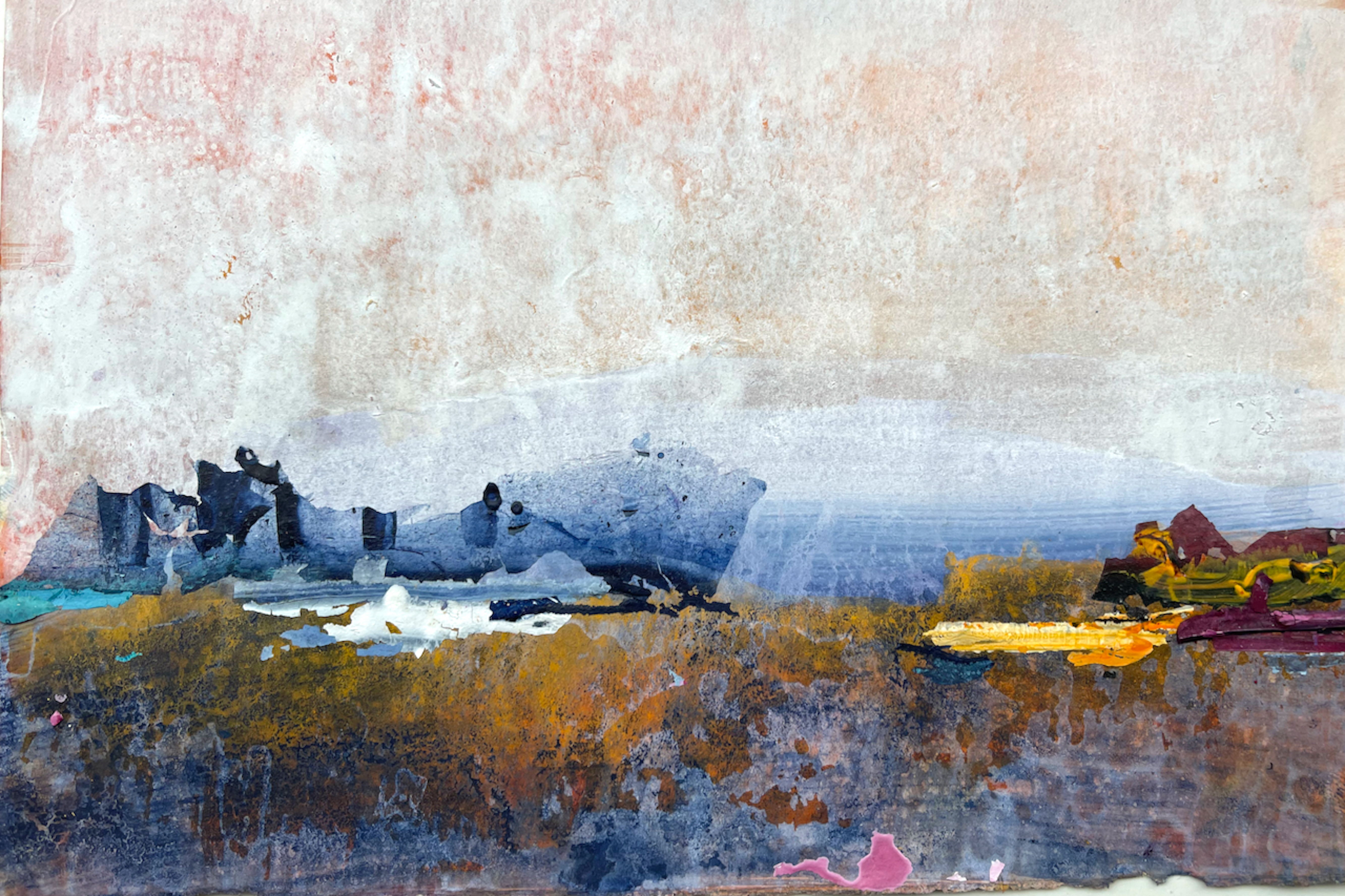Irini Miga interviews Sultana Savvi
Irini Miga
Can you tell us a little bit about your background and how you started painting?
Sultana Savvi
I come from a small village in Florina, Sklithro. My parents were farmers, simple everyday people, who had nothing to do with art. While my mother saw my calling to painting, she did not know how she could possibly help me with my love for art, as she told me later on at an old age. When I was 11 years old we settled in Zurich, Switzerland. Initially, for livelihood reasons, I graduated from trade school. So I worked for about 15 years as a bank clerk. At the same time, I attended courses at the School of Fine Arts in Zurich. During this time, while I was still attending art classes, I got married and my two children were born. There was always a desire to attend the Zurich School of Fine Arts. After finishing art high school, which is a prerequisite for admission to the Zurich University of the Arts (ZHdK), at the age of 47, my dream became a reality. All this time I was actively painting. My first exhibition took place in 2003 and since then I have been exhibiting either individually or collectively.
IM
You have a very peculiar painting lexicon, with a process-based practice. Can you expand on the ways in which this language of yours has evolved over the years?
SS
 |
| Sultana Savvi, Untitled, 2020, Acrylic and Collage on paper, 15 x 21 cm |
 |
| Sultana Savvi, Untitled, 2020, Acrylic and Collage on Paper, 15 x 21 cm |
IM
Your works feel like studies of atmosphere and vastness, like the point where dreamy landscapes of interiority meet with the exterior world. Do you ever have as a starting point a real landscape?
SS
Almost never. And if I ever start from a real landscape, on the way it’s no longer recognizable. They’re really dreamlike, internal landscapes that are externalized.
IM
What about titles?
SS
I very rarely give titles. Titles limit the imagination, they bind us. When I sometimes give titles, I consciously intend this reference, this bond. This can happen with certain works that have a clear reference to a place a city or a specific architecture.
 |
| Sultana Savvi, Untitled, 2022, Acrylic on Canvas, 15 x 25 cm |
 |
| Sultana Savvi, Untitled, 2022, Acrylic on Canvas, 15 x 25 cm |
IM
In your most recent works I feel that the immensity of the world is essentially summed up in the smallest, most intimate surfaces of canvas. What led you to this decision, to use such a small scale?
SS
I’ve been working almost exclusively on small surfaces lately, that’s true. I’m fascinated by the idea (and your description fits perfectly) that I’m trying to summarize the essence of a work on small surfaces. It’s a challenge that fascinates me. That doesn’t mean that I’m going to stick to small works in the long run, but for now I’m attracted to the idea of creating small imaginary worlds on small surfaces.
 |
| Sultana Savvi, 2022, Untitled, Acrylic on Canvas, 15 x 25 cm |
 |
| Sultana Savvi, Untitled, 2022, Acrylic on Canvas, 15 x 25 cm |
IM
What projects are you currently working on? Let’s talk about the works you’ll be showing at the Group Exhibition “Women and FLINT in Art” in Schaffhausen.
SS
 |
| Sultana Savvi, Untitled, 2020, Acrylic on Paper 15 x 21 cm |
 |
| Sultana Savvi, Untitled, 2021, Acrylic on Paper, 15 x 21 cm |
IM
I know that you will be speaking on a panel discussion during that show. Can you tell us the details?
SS
IM
Thank you very much, Sultana. Wishing you all the very best!
SS
Thank you very much, dear Irini. Likewise.
 |
| Sultana Savvi, Untitled, 2020, Acrylic on Paper, 15 x 21 cm |
 |
| Sultana Savvi, Untitled, 2019, Acrylic on Paper, 15 x 21 cm |
 |
| Sultana Savvi, Untitled, 2022, Acrylic on Canvas, 15 x 21 cm |



